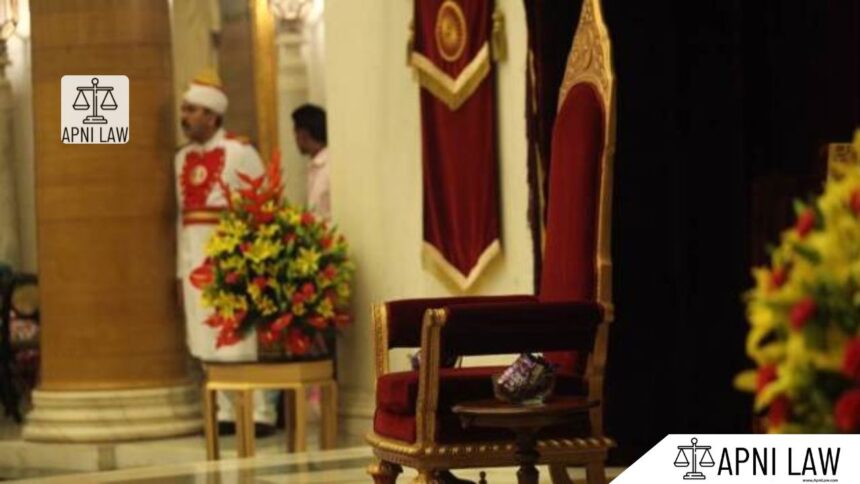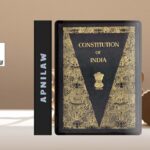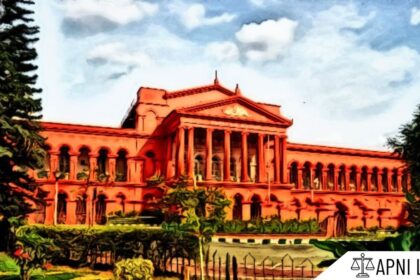The President of India and the Prime Minister of India occupy the two most important positions in the constitutional framework of the country. While the President functions as the ceremonial head of the state, the Prime Minister works as the real head of government and the most powerful executive authority. Their relationship is rooted in the provisions of the Constitution, particularly Article 74, which makes the President act on the aid and advice of the Council of Ministers headed by the Prime Minister. Yet, the President retains certain discretionary powers in rare circumstances. This arrangement ensures balance between symbolism and real governance.
What Are the Constitutional Roles of the President and the Prime Minister?
The Constitution defines the President as the formal head of the nation who represents the unity and integrity of India. The President performs important constitutional duties such as appointing the Prime Minister, granting assent to bills, summoning Parliament, and declaring emergencies. However, the President usually acts on the advice of the Prime Minister and the Council of Ministers.
The Prime Minister, in contrast, functions as the real executive. He or she leads the Council of Ministers, frames national policies, manages administration, and directs governance. The Prime Minister also holds command over the majority in the Lok Sabha, which provides democratic legitimacy. The relationship works on the principle that while the President symbolizes authority, the Prime Minister exercises it in practice.
How Are the President and Prime Minister Appointed?
The President of India is elected indirectly by an electoral college consisting of the elected members of Parliament and the elected members of the State Legislative Assemblies. The term of office is fixed for five years, though re-election is possible.
The Prime Minister is appointed by the President but the choice is not arbitrary. The President usually selects the leader of the majority party or coalition in the Lok Sabha. In cases where no party has a clear majority, the President may exercise discretion to invite the leader most likely to command majority support. Thus, while the President appoints, the actual choice reflects the democratic verdict.
How Can They Be Removed?
The President can be removed only through the process of impeachment for violation of the Constitution. This procedure is lengthy and requires a special majority of both Houses of Parliament.
The Prime Minister does not enjoy such fixed tenure. The office depends on the support of the majority in the Lok Sabha. If the Prime Minister loses this support, the House can pass a no-confidence motion. Once passed, the Prime Minister and the Council of Ministers must resign. Hence, the Prime Minister’s position remains politically accountable to Parliament, while the President enjoys constitutional security.
Who Holds the Real Executive Power?
In theory, executive power vests in the President, but in practice, the Prime Minister holds it. The Constitution clearly directs the President to act on the aid and advice of the Council of Ministers. The Prime Minister leads this Council, controls the Cabinet, and guides policies on administration, economy, defense, and international relations.
The President functions as the nominal executive who formalizes decisions. For example, the President grants assent to bills, but only after Parliament passes them under the leadership of the Prime Minister and the Cabinet. The President also issues orders in the name of the government, but the Prime Minister directs those actions.
What Discretionary Powers Does the President Hold?
Although the President normally acts on the advice of the Prime Minister, the Constitution gives room for certain discretionary powers. One major example occurs during a hung Parliament when no party has a clear majority. In such cases, the President decides whom to call for forming the government.
The President may also return a bill once for reconsideration, except for money bills. In cases of constitutional crises, such as when state governments fail to function, the President can impose President’s Rule under Article 356 on the advice of the Union Cabinet. In addition, during emergencies under Articles 352, 356, or 360, the President assumes wide powers, though even then the Prime Minister and Council remain the driving force behind decisions.
How Do Checks and Balances Work Between Them?
The system of governance ensures that the President and the Prime Minister maintain a balanced relationship. The President, though the nominal executive, acts as a constitutional guardian and ensures that all government actions conform to the provisions of the Constitution. The Prime Minister, as the real executive, remains accountable to the Parliament, particularly the Lok Sabha, which represents the people.
This structure prevents concentration of power. The President cannot ignore ministerial advice in ordinary circumstances, but the Prime Minister cannot bypass the Constitution, which the President upholds. Together, they create harmony in governance while safeguarding accountability.
How Do Their Tenures Differ?
The President serves a fixed tenure of five years unless re-elected. Removal requires impeachment, making the position secure against political instability.
The Prime Minister, however, does not have a fixed term. The office survives only as long as the Prime Minister commands majority support in the Lok Sabha. This flexibility ensures democratic accountability and responsiveness to public will. The contrast in tenures highlights the difference between the stability of the symbolic head and the dynamic nature of the political executive.
How Do Their Roles Differ in Law-Making?
In law-making, the President has a formal but important role. A bill passed by Parliament becomes law only after the President’s assent. The President may also summon and prorogue Parliament or dissolve the Lok Sabha on the advice of the Prime Minister. In case of a deadlock between the two Houses, the President can summon a joint sitting.
The Prime Minister, on the other hand, drives the legislative process. He or she determines the legislative agenda, ensures party discipline, and steers debates in Parliament. Thus, while the President formalizes laws, the Prime Minister shapes them.
What Is Their Role in Foreign Affairs?
The President represents India in international relations. The President ratifies treaties, accredits ambassadors, and receives foreign dignitaries.
Yet, the Prime Minister and the Cabinet frame foreign policy, conduct negotiations, and take key decisions on defense and security. The President acts as the ceremonial face of India abroad, while the Prime Minister leads practical diplomacy.
How Does Their Relationship Ensure Stability?
The dual structure of having a ceremonial head and a real executive ensures both stability and flexibility. The President symbolizes national unity and continuity, standing above politics. The Prime Minister remains closely tied to parliamentary democracy and political accountability.
This arrangement avoids conflict. The President does not interfere in daily governance but ensures constitutional propriety. The Prime Minister works with full authority but cannot overstep constitutional limits. Together, they provide a system where power is exercised responsibly.
For any specific query call at +91 – 8569843472
Conclusion
The President of India and the Prime Minister share a unique relationship shaped by the Constitution. The President stands as the ceremonial head and constitutional guardian, while the Prime Minister acts as the actual head of government with effective executive powers. Their connection balances authority and accountability. The President represents unity and stability, while the Prime Minister ensures governance and decision-making. This balance makes the Indian parliamentary system both democratic and efficient.








